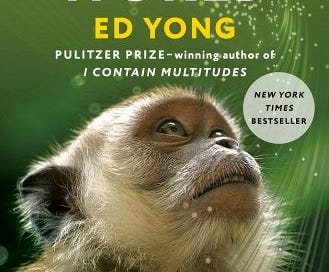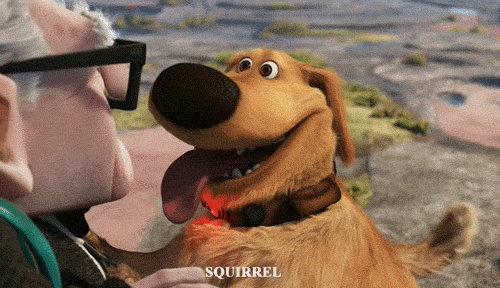Book Rex: An Immense World
Ed Yong's 2022 masterpiece is a glimpse into how animals experience the world, and the limitations of what we can even imagine
Imagine for a second: What do you think your dog experiences when you walk into your home? What strikes it first — the sound of your car pulling into the driveway, the jingle of the keys on your door, your smell wafting in with the outside breeze? Are you imagining the dog basically as yourself, but a few feet closer to the ground? Are its thoughts in English? Is it thinking something like “TREAT!” or “WALK!” or “SQUIRREL!”
Ed Yong’s 2022 masterpiece An Immense World deals with this question, and how humans are woefully unsuited to imagining the subjective experiences of other creatures — when we do, we can’t help but imagine our own mind simply transplanted into theirs, and the result is books like The Art of Racing in the Rain, in which the dog narrator spends long periods of time lingering on descriptions of human women’s breasts.
The reason we can’t imagine an animal’s world, Yong explains, is because they have different sensory capabilities, and these abilities make up a totally different umwelt from ours. Umwelt is a German term that literally translates into “around world” or “environment,” but basically refers to a creature’s subjective experience of the world. And we humans can’t possibly comprehend that because we have totally different sensory capabilities. We can’t imagine a dog’s experience because a dog’s sense of smell is far superior to ours, and as a consequence, they learn things that we would never assume they’d figure out.
For example, a dog would probably be able to figure out pretty quickly how recently you pooped, masturbated, or had sex by smelling your butt, hands, or crotch. If you slept with someone who wasn’t your spouse, they’d probably be able to catch a whiff of it. These are not the pieces of information we like to think of our dog knowing, but animals see things we’d never even know are there.
Beyond our imagining
Across the entire animal kingdom, the expanse of sensory abilities is genuinely mind-boggling, and Yong’s book is the type you only put down to say, “Holy SHIT” and then run to tell your wife the cool fact you learned. Here are just a few of those facts for me:
Birds (and many other animals) see a wider range of color than we do. This does not just mean they see different wavelengths of light — infrared or ultraviolet rays, for example, though many of them do see those — it means they see more colors within that range. Yong jokes that they would see colors that we could possibly conceptualize as rurple, gruple, and yurple. More interesting — some humans have a mutation that allows them to see in more color. They usually never find out, because it’s impossible to communicate this difference without checking the structure of their eyes.
Certain types of moles don’t experience pain in the same way. Because they live underground, there is less ventilation, which means atmospheres with much higher concentration of carbon dioxide, making the atmosphere more acidic. At these levels, we’d feel our lungs burning, but moles are unphased, and don’t even seem to react when they touch actual fucking acid.
Fin whales are so loud their calls can be heard up to 13,000 miles away. It’s believed they use this noise for echolocation purposes, and it helps them chart the sea floor. But scientists in Bermuda have heard blue whales singing off the coast of Ireland.
Bats (as many of us know) use echolocation to catch prey in the dark. What we don’t know is that their squeaks are often insanely loud, up to 130 decibels, which is as loud as a jet plane. Our ears mercifully can’t hear the frequencies they sing at, because if they did, we’d go to bed every night to the sound of jet-loud bat screams.
Many animals have the ability to sense electric fields. While most of these animals are fish, because water conducts electricity better, it also includes bees. This is useful because the earth has a negative charge, while the sky has a positive one (this is part of the reason we have lightning). By flying through the air, bees give themselves a positive charge, and seek out flowers which are grounded with a negative charge. This difference in charge means that before they even touch the flower, the pollen jumps from the flower to their fur, like your hair does to a charged-up balloon. Scientists have found that bees ignore flowers that do not have the proper charge.
Yong’s book asks how these differences in senses would alter an animals perceptions of the world. If we navigated space not through sight but through echolocation, what would our internal map of the world look like? If we communicated with each other through smell or vibrations rather than sound, what would our communication look like? Would we be sniffing each other’s armpits, or simply holding hands? Further, how would the different type of information change our understanding of the world? If we could smell the last time someone pooped, rubbed one off, or had sex, it would take some of our most private, secretive facts of life and make them public knowledge.
What information, then, would we want to keep privileged?
For me, this is delightful as a thought experiment because it urges us to understand that there is so much more to the world than we can even possibly imagine. Scientists are doing their best to understand these senses, but it’s kind of like explaining music to someone who’s been deaf since birth — they may understand it as vibrations, but they won’t have a good sense of it as complex sound. Worse still for scientists, unlike the deaf and the not-deaf, there’s no common language through which we can communicate with these animals.
The world, as Yong suggests, truly is immense, and there are astounding things that other creatures are perceiving that exist totally beyond our understanding.





